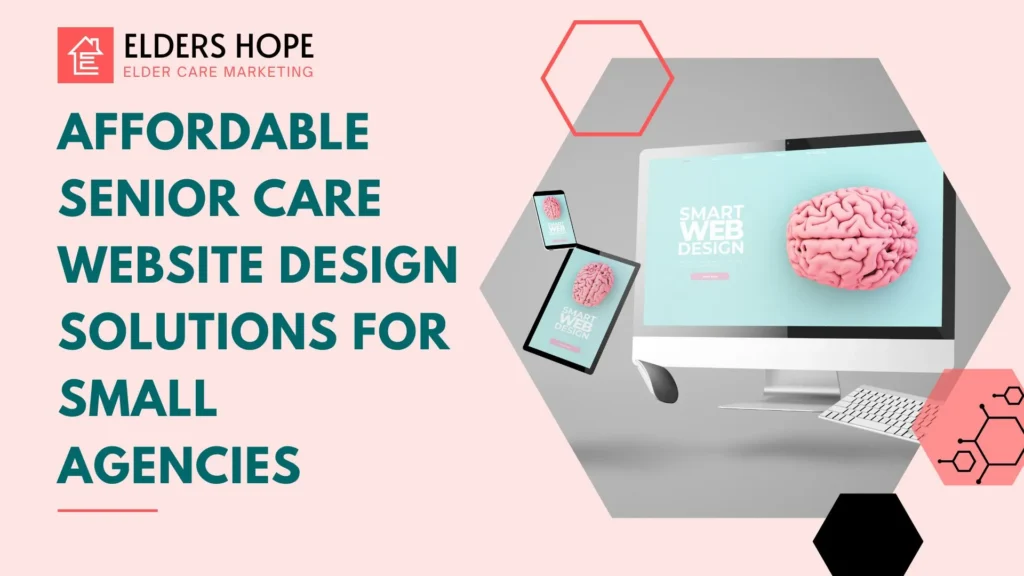5 Most Important Things to Include in a Home Healthcare Website

Designing a home healthcare website is easy.
Designing one that earns trust, speaks directly to families in need, and converts visitors into clients? That’s where the real work begins.
Your home healthcare website isn’t just a digital brochure—it’s often the first cry for help from someone caring for an aging parent or recovering loved one. If you want to connect with those people, and be their answer in a sea of options, your website must be intentional, empathetic, and strategic.
Here are the 5 most important things your home healthcare website must have if you want it to truly serve families and grow your business.
Table of Contents
1. Speak Directly to the Person Who’s Searching
Most people landing on your website aren’t casual browsers—they’re hurting. They’re overwhelmed. Maybe even panicking. That’s why your site must speak to them like a guide, not a salesperson.
Using a messaging framework like StoryBrand is incredibly effective here. Focus on:
- The problem they’re facing (e.g., mom can’t manage alone anymore)
- The emotional outcome they want (e.g., peace of mind, independence, safety)
- Your role as the solution provider (e.g., trusted care, expert help, compassionate support)
Forget jargon and technical details in the beginning. Lead with heart.
Instead of: “We provide non-medical in-home assistance services”
Say: “We help families like yours find peace of mind with compassionate home care”
💡 Example: “At Eldershope, we don’t just care for seniors—we support families. With professional, in-home caregivers, your loved ones stay safe, happy, and right where they belong—home.”
2. Clearly Show the Next Step (Don’t Make Them Guess)
Clarity is kindness—especially when your visitor is likely stressed.
Make it incredibly easy for someone to know what to do next:
- “Schedule a Free Care Consultation”
- “Call Now to Speak With a Care Advisor”
- “Request Pricing & Availability”
These CTAs should appear in the navigation bar, hero section, and mid-page banners. Repeating them isn’t pushy—it’s helpful.
Also, include a simple visual of the process (like a 3-step guide):
- Call Us or Fill Out the Form
- Get a Personalized Care Plan
- Start Care at Home
People don’t just need information—they need direction.
3. Build Authority Without Saying “Trust Us”
Anyone can say “we care” or “we’re the best.” But families want proof. Build your authority with:
- ★ ★ ★ ★ ★ Google reviews from real families
- Caregiver certifications, licensing, and training standards
- Association memberships (e.g., HCAOA, BBB Accredited)
- Photos and bios of your leadership and care team
- Client stories or short video testimonials
💡 Pro Tip: Add a slider or review block that pulls in your latest Google reviews automatically.
✅ Real trust is earned through transparency and consistency.
4. Offer Educational Content That Actually Helps
You’re not just selling care—you’re guiding people through one of life’s hardest seasons. Publishing blogs, guides, or resources gives families clarity before they call you.
Examples of helpful content:
- “Home Care vs. Home Health: What’s the Difference?”
- “Signs It’s Time for In-Home Support”
- “How Much Does Home Care Cost in [City]?”
This also helps you rank on Google when people search questions like:
“What to do when my dad falls at home?”
“Best care for elderly with dementia at home?”
💡 Internal Link Opportunity: Link to your Home Care Services page or FAQs from blog posts for deeper discovery.
5. Local, Location-Specific Pages to Dominate Nearby Searches
Your services aren’t nationwide—you serve a local area, and that’s your biggest SEO advantage.
Build dedicated location pages like:
- Home Care in [City Name]
- In-Home Senior Care Services in [County Name]
- [City Name] Alzheimer’s & Dementia Home Support
These pages help you rank for “home care near me” and attract local leads ready to hire.
Make sure each page includes:
- Details about services offered in that region
- Local testimonials or team photos
- Embedded Google Map
- NAP consistency (Name, Address, Phone)
💡 Don’t forget to keep your Google Business Profile updated with reviews, photos, services, and Q&A. It’s the digital front porch to your website.
Bonus Tip: Add a Human Touch Everywhere
The people reading your website aren’t just customers—they’re daughters, sons, caregivers, spouses, trying to do the right thing.
Here’s how to meet them with heart:
- Use real images of your team and clients (with permission)
- Write in a warm, conversational tone
- Avoid robotic or overly clinical language
- Include quotes or stories that reflect real experiences
At Eldershope, we believe a home healthcare website should feel like a hug—reassuring, clear, and compassionate.
Ready to Build a Home Healthcare Website That Converts?
A beautifully designed, strategy-driven home healthcare website isn’t just about looking good—it’s about creating peace of mind for your visitors.
If you’re ready to:
✅ Rank higher in search engines
✅ Attract more qualified leads
✅ Build long-term trust with families
✅ Convert traffic into real inquiries
👉 Contact Eldershope today for a free website consultation
Let’s build something that works for you—and for them.
Frequently Asked Questions
Q: Can I use my current website platform for a home care site?
Yes, but make sure it supports SEO optimization, blog publishing, and mobile responsiveness.
Q: How many pages should my home healthcare website have?
Start with 7–10 pages: Homepage, About, Services (each with subpages), Locations, Contact, Blog, and FAQs.
Q: How soon can I start ranking for home care keywords?
With strong SEO and a consistent content strategy, you may start seeing improvements in 3–6 months.
Q: Do I really need a blog?
Absolutely. It’s one of the best ways to drive organic traffic, answer client questions, and build trust over time.

Elders Hope is a highly experienced development and marketing team, which provides a professional solution for your senior care business.
Our Expertise
Our Services For
Subscribe to our Newsletter
Enter your email address below and subscribe to our newsletter




